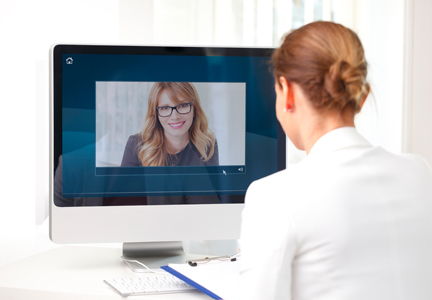
Image courtesy of Review of Optometric Business
By Linda Conlin, Pro to Pro Managing Editor
When teleoptometry debuted in 2015, it was met with considerable skepticism. Many wondered if it was a threat to optometrists and their patients. In 2018, remote eye exams were still being debated. Review of Optometry noted in an October 2018 article, “Proponents say remote vision testing reminds the public of the importance of good vision and expands access to screenings. Detractors worry they diminish the value of in-person eye exams and the importance of eye health.”
Shuttered offices and limited patient access to in-person eye exams during COVID-19 has fostered opportunity in adversity. Teleoptometry platforms have improved their technology rapidly since those early, but not-so-long-ago days, expanding what optometrists can do remotely. Local regulations governing telemedicine have kept up with the new demand for remote services. Doctors are relieved to be able to reach more patients in a safer environment, but what do patients think?
The first consideration is what patients want from the eye exam experience. In an April 2018 article, Vision Monday reported that Lee Kuczewski, director of operations, Smart Vision Labs, a developer of teleoptometry devices, asked patients that question. “The three things that patients asked for were convenience, ‘connectedness,’ and clarity,” he said. But what about older patients? According to an article in Review of Optometric Business this month, Mike Rothschild, OD found that, “Older patients love it. They are typically more tech-savvy than you think and often have trouble getting to doctor visits. … All age groups find this method of care delivery acceptable and high quality.”
Are patients truly satisfied with the quality of care teleoptometry offers? IOVS (Investigative Ophthalmology and Visual Science) reported on a small study this month. The 30 students who participated first underwent a teleoptometric comprehensive eye exam by an in-person technician and videoconference with an investigator optometrist. Students then had an in-person comprehensive eye exam by an investigator optometrist. A satisfaction survey was provided at the conclusion of each exam.
The results: IOVS reported that 100% of participants believed the in-person exam addressed their concerns, were satisfied with the care they received, and rated exam quality positively. In line with those findings, 96.67% believed the teleoptometric exam addressed their concerns while the remaining 3.33% were neutral. Eighty percent of teleoptometric participants were satisfied with their care, while 20% were neutral and 0% dissatisfied. Seventy-three percent rated the quality of the exam as positive, 23.3% neutral and 3.3% negative.
As ECPs embrace new technology, so do our patients. Teleoptometry is here to stay. It offers an opportunity, not just during the current health crisis but long after it has subsided, with accuracy, convenience, and safety.
Learn about new technology for the measurement and treatment of digital eye strain with our CE, Neurolens: A Breakthrough Solution for Headaches, Neck Tension and Digital Eyestrain, at 2020mag.com/ce. This course is free thanks to the generosity of Neurolens, Inc.











